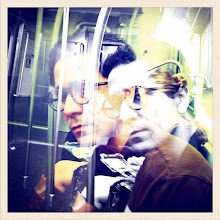To transition from pace by using pace to describe the uses of aesthetic comport in the film, I will briefly read what I understand to be the central moment in the film. Despite the bulky presence that Handel’s Sarabande has in the film, as the main title, end title, and motif title for the duels, I would argue that it is not the central musical composition. The central moment in Barry’s adventure is his successful courting of Lady Lyndon. It, in effect, changes his life. And the entirety of Barry’s seduction happens in less than four minutes:
The action moves rapidly but unhurriedly from one moment to the next, as Barry and Lady Lyndon are in a gambling room, exchanging one bet and the next. The camera lingers on Barry’s staring at Lady Lyndon and on her staring back at him catching her gaze and the two staring at each other. Schubert’s Piano Trio in E-flat builds in the background, under the sound of gambling chips clinking, as if the music were playing there, in the film, in the background. The scene and its players are measured by the music and we must presume that they sense this measure, if they can hear the score. Lady Lyndon departs for a breath of air, the camera cuts to her, walking outside, in rhythmic step with the beat of the composition. She has taken the harmonious integration of sonic experience in the gambling hall outside with her. It is carried like a metaphorical object from the actual world into the ideational world. She, by consequence, becomes less objective, or real, and enters, in her exeunt moment, an ontological zone of aesthetic mediation. She makes her way across the balcony, to a columned perimeter and stops to stare into a courtyard. She, again, has an empty, oiled look in her eyes, until she senses somebody behind her, and her eyes turn downward and to her right.
We see Barry through the window and he definitely pauses before exiting. He is, presumably, considering his actions. Barry exits the mansion and enters the aesthetic space of mediation carried onto the balcony by Lady Lyndon. We hear Barry’s heels clicking on the balcony floor and they are just outside the beat of the music. Barry, it would seem, is making the effort to align himself with the sonic steadiness of the moment’s aesthetic unfolding. His effort belies a surreptitious intent. His attraction is not entirely natural. He has absorbed rhythm to the extent that he is evidently manipulating it. He is following the pace. He approaches Lady Lyndon with unlocking gaze. She turns and there is no question of intent on either part. As Barry takes Lady Lyndon’s hand into his, there is no surprise. They are already romantically destined and we are instead more intently watching the grace of their courtship—-the steadily unfolding strokes of their romance. Pace presupposes upshot. Schubert, the Romantic aesthete that surges from the music of Schubert, has prepared the requisites of passion. In so far as Barry’s mettle is able to meet the demand of the aesthetic, Barry is able, by his sheer energy and volition, to successfully court Lady Lyndon and move himself into a higher sphere of society than that which circumstance had previously afforded him. Barry, by his successful alignment of character to aesthetic pace, or what I will term aesthetic comport, creates a gravitational pull by which he is able to draw Lady Lyndon into his orbit. Gravity is mediated by aesthetic. Comport is the key to society.
Thursday, December 11, 2008
Subscribe to:
Post Comments (Atom)




No comments:
Post a Comment